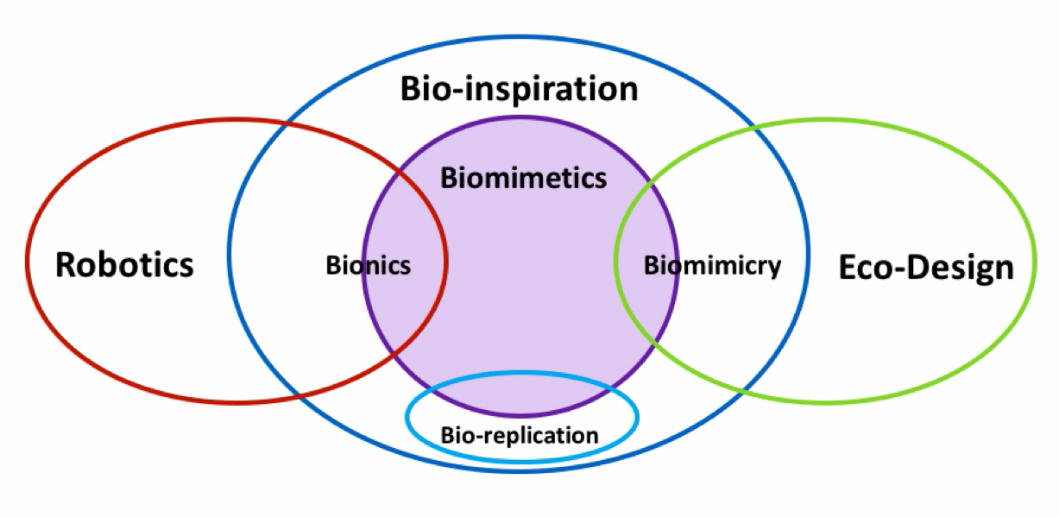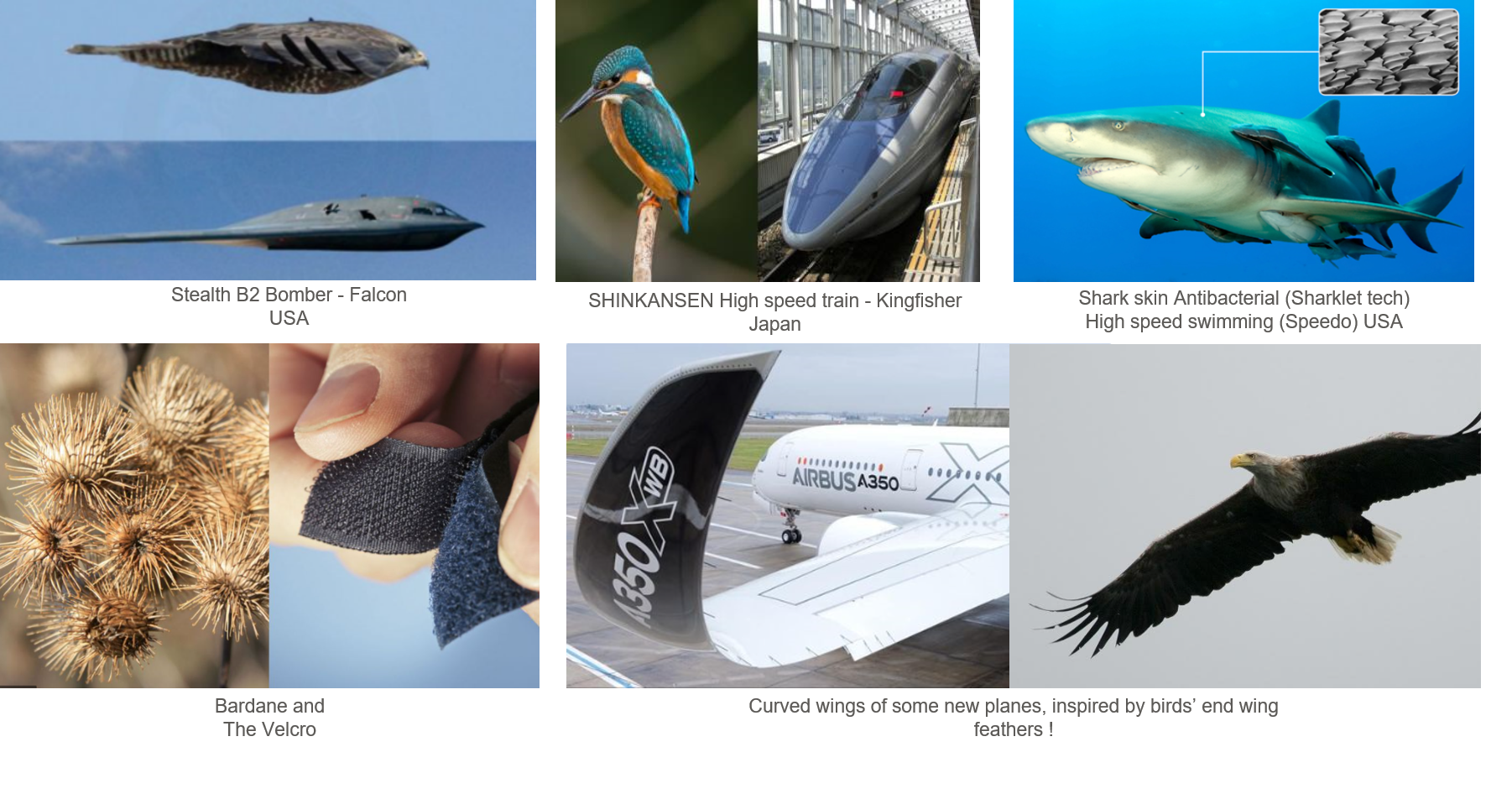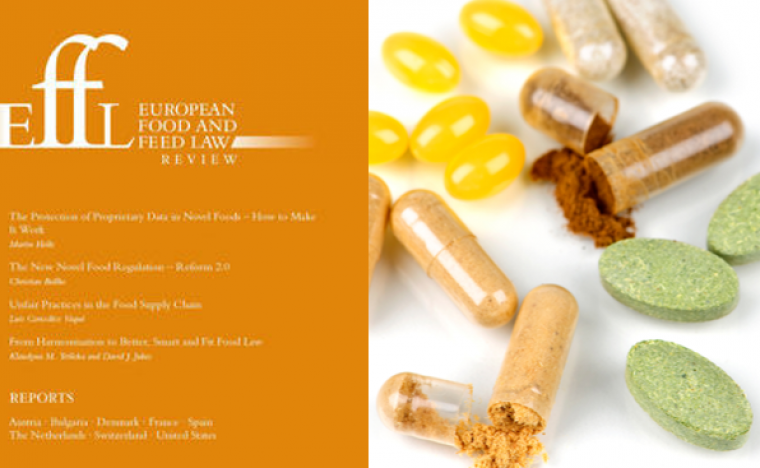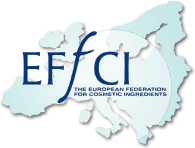Biomimicry: a concept for more sustainable innovations
Biomimicry is an approach that consists of innovating by drawing inspiration from the living, based on solutions adopted over the course of their evolution of nearly 4 billion years. Nature is the world's leading research and development laboratory and is an inexhaustible source of inspiration, whether it be animal, plant, mineral or other, whether the biological model is now extinct or alive.
The approach of biomimicry is based on "solutions" proven by nature, within the framework of sustainable development in better harmony with the environment and sustainable in the long term. Biomimicry represents an opportunity for humanity to innovate in a responsible and sustainable way by imitating tricks from nature. Let's look at what life can offer us, let's take the time to observe it in order to draw lessons and ideas for our current and future challenges.
By taking biological systems as a model, it becomes possible to reconcile industrial activities and economic development with the preservation of the environment, resources and biodiversity.
Biomimicry concerns many sectors of human activity: medicine, research, industry, the economy, architecture and urban planning, agriculture, ecosystem management and development, etc. The list is not exhaustive because it is above all an approach whose principle can be applied more or less directly to all fields.
The concept is based on the key idea that nature always functions on a principle of economy and optimal efficiency, without any waste. Nothing is lost in nature and immediately reusable. Whatever its field of application, the biomimicry philosophy is therefore explicitly part of a global strategy of responsible development, concerned with establishing a viable balance between the resources offered by the planet and their exploitation.
Biomimicry has been the subject of standardisation work, notably by the International Organisation for Standardisation (ISO) and the French Association for Standardisation (AFNOR), in order to define the various concepts. There are different standards (ISO 18458 on terminology, concepts and methodology, ISO 18459 (biomimetic optimisation) and the XP X42-502 standard on biomimetics and eco-design).
- Bio-inspiration: Creative approach based on the observation of biological systems.
- Biomimetics: Interdisciplinary cooperation of biology and technology or other fields of innovation with the goal of solving practical problems through the function analysis.
- Bio-replication: Direct reproduction of a biological structure in order to realize at least one specific functionality.
- Biomimicry: Philosophy and interdisciplinary design approaches taking nature as a model to meet the challenges of sustainable development in social, environmental and economic perspective.

BIO-INSPIRED DESIGN CHARACTERISATION AND ITS LINKS WITH PROBLEM SOLVING TOOLS
Mibelle Biochemistry is partner of the Biomimexpo which is the first event dedicated to biomimicry in France, member of the CEEBIOS and Biomimicry Switzerland and identified as a key player in the field of bio-inspired cosmetic actives.
Also, some of our ingredients are concepts of biomimicry:
- SensAmone P5: A five amino acid biomimetic peptide containing the TRPV1 binding motive of the sea anemone venom protein APHC1
- Snow Algae Powder: Imitating the conept of caloric restriction for longevity
- RoyalEpigen P5: Five amino acid peptide mimicking the queen maker RoyalActin
According to our motto "Inspired by nature, realized by science", the innovative biotechnological concepts such as PhytoCellTec™ and MossCellTec™ are inspired by nature and preserve the natural resources by using only a few collected samples.
If you are interested in more information about this fascinating topic, you can contact the author Stéphane Poigny directly: stephane.poigny@mibellegroup.com.
Further information:
https://biomimexpo.com/partenaires-2021/
https://biomimicryswitzerland.org/













